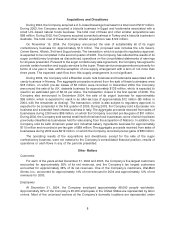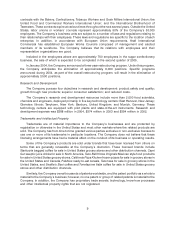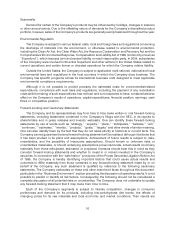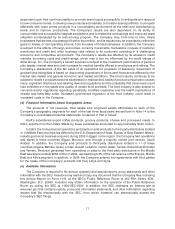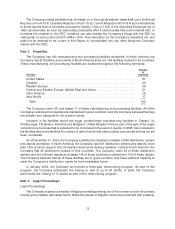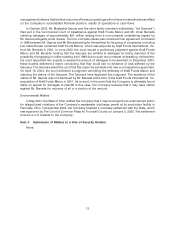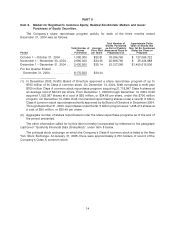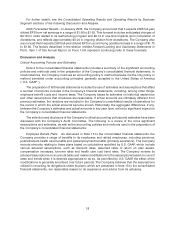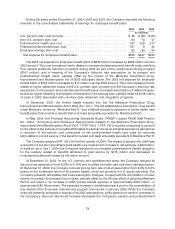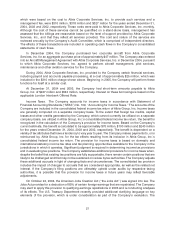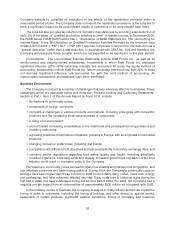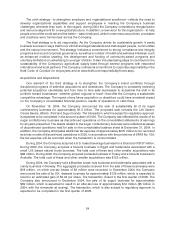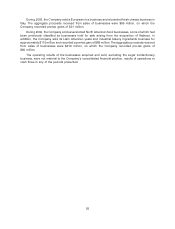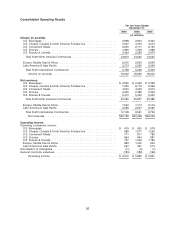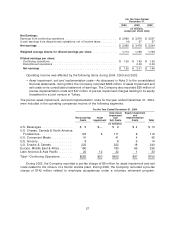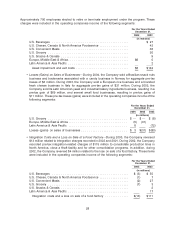Kraft 2004 Annual Report Download - page 19
Download and view the complete annual report
Please find page 19 of the 2004 Kraft annual report below. You can navigate through the pages in the report by either clicking on the pages listed below, or by using the keyword search tool below to find specific information within the annual report.For further details, see the Consolidated Operating Results and Operating Results by Business
Segment sections of the following Discussion and Analysis.
2005 Forecasted Results—In January 2005, the Company announced that it expects 2005 full-year
diluted EPS from net earnings in a range of $1.60 to $1.65. This forecast includes anticipated charges of
$0.18 for costs related to its restructuring program and $0.12 in one-time impacts upon completion of
divestitures, and reflects approximately $0.04 in ongoing dilution from divestitures. The Company also
announced that it expects 2005 full-year diluted EPS on a continuing operations basis in a range of $1.75
to $1.80. The factors described in the section entitled Forward-Looking and Cautionary Statements in
Part I, Item 1 of this Annual Report on Form 10-K represent continuing risks to these forecasts.
Discussion and Analysis
Critical Accounting Policies and Estimates
Note 2 to the consolidated financial statements includes a summary of the significant accounting
policies and methods used in the preparation of the Company’s consolidated financial statements. In
most instances, the Company must use an accounting policy or method because it is the only policy or
method permitted under accounting principles generally accepted in the United States of America
(‘‘U.S. GAAP’’).
The preparation of all financial statements includes the use of estimates and assumptions that affect
a number of amounts included in the Company’s financial statements, including, among other things,
employee benefit costs and income taxes. The Company bases its estimates on historical experience
and other assumptions that it believes are reasonable. If actual amounts are ultimately different from
previous estimates, the revisions are included in the Company’s consolidated results of operations for
the period in which the actual amounts become known. Historically, the aggregate differences, if any,
between the Company’s estimates and actual amounts in any year have not had a significant impact on
the Company’s consolidated financial statements.
The selection and disclosure of the Company’s critical accounting policies and estimates have been
discussed with the Company’s Audit Committee. The following is a review of the more significant
assumptions and estimates, as well as the accounting policies and methods used in the preparation of
the Company’s consolidated financial statements:
Employee Benefit Plans. As discussed in Note 15 to the consolidated financial statements, the
Company provides a range of benefits to its employees and retired employees, including pensions,
postretirement health care benefits and postemployment benefits (primarily severance). The Company
records amounts relating to these plans based on calculations specified by U.S. GAAP, which include
various actuarial assumptions, such as discount rates, assumed rates of return on plan assets,
compensation increases, turnover rates and health care cost trend rates. The Company reviews its
actuarial assumptions on an annual basis and makes modifications to the assumptions based on current
rates and trends when it is deemed appropriate to do so. As permitted by U.S. GAAP, the effect of the
modifications is generally amortized over future periods. The Company believes that the assumptions
utilized in recording its obligations under its plans, which are presented in Note 15 to the consolidated
financial statements, are reasonable based on its experience and advice from its actuaries.
18


